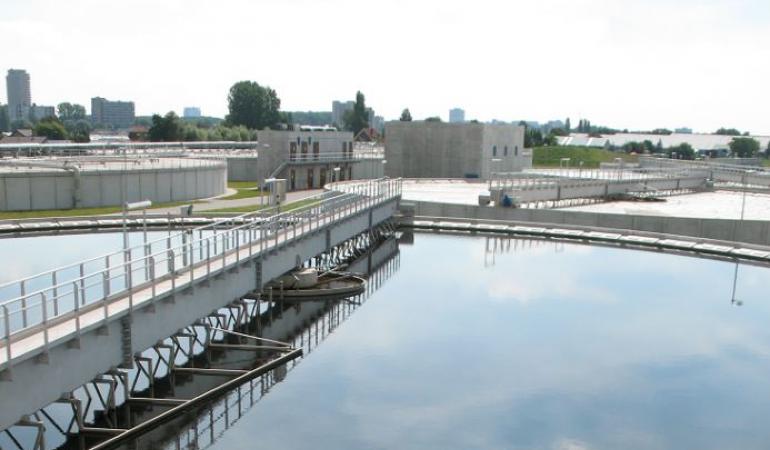View CWEA’s round-up of Coronavirus (COVID-19) worker safety information here >

Photo by the Netherlands National Institute for Public Health and the Environment
This article is from the covid19waterblog.wordpress.com, a blog run by several international water researchers.
The possibility of monitoring the presence of SARS-CoV-2 RNA in sewers has been flagged as an important research opportunity (most recently here).
Many people are familiar with the idea of monitoring the presence of illicit drugs in sewage as a means of determining temporal and spatial patterns of drug use in communities. A directly analogous concept is to monitor the presence of viruses (or the genetic material of viruses) as a means of tracking patterns of infection within a community. These concepts are sometimes referred to as ‘wastewater epidemiology’.
This week, the Dutch National Institute for Public Health and the Environment (RIVM) reported that that they had taken the first step towards wastewater epidemiology for SARS-CoV-2.
Using “molecular methods”, SARS-CoV-2 was analysed in untreated wastewater collected from three locations:
The reference to “molecular methods” means analytical techniques that detect the presence of the genetic material (RNA) of SARS-CoV-2. It is important to note that this genetic material can often be detected regardless of whether the virus particle remains intact or infectious. For example, scientists have been able to sequence the DNA of a horse that died 700,000 years ago, -without implying that the horse is still a viable living organism.
Weekly wastewater samples have been collected from Schiphol Airport since 17 February 2020. According to the researchers, there were no positive detections of SARS-CoV-2 RNA during the first two weeks, but then positive detections began to appear in samples collected from the third week onward (so far 2, 9 and 16 March). The first sample containing the virus was taken four days after the first person in the Netherlands tested positive for COVID-19 on 27 February.
Similarly SARS-CoV-2 RNA was detected in samples taken from the wastewater treatment plant in Tilburg on 3, 10 and 17 March. Again, the first positive RNA detection occured within the first week after the first confirmed cases occurred.
Of the wastewater samples taken from the wastewater treatment plant in Kaatsheuvel on 3 and 18 March, positive detections of SARS-CoV-2 RNA were only reported for the sample taken on 18 March.
These are preliminary, but potentially important findings. They suggest that wastewater epidemiology offers real promise to enable the tracking of patterns of infection within communities. Such methods will prove to be of particular value if they are able to detect changes in infection rates before the corresponding patterns of illnesses (COVID-19) are detected from clinical reporting.
Note that it is likely that some media outlets will interpret the detection of SARS-CoV-2 in sewage as implying that viable virus particles have been detected. This can lead to headlines such as “Warning after coronavirus found in Dutch Sewage”. While the possibility that some (or even all) of the detected RNA may be associated with viable infectious SARS-CoV-2 should not be dismissed, this research currently implies no such evidence.